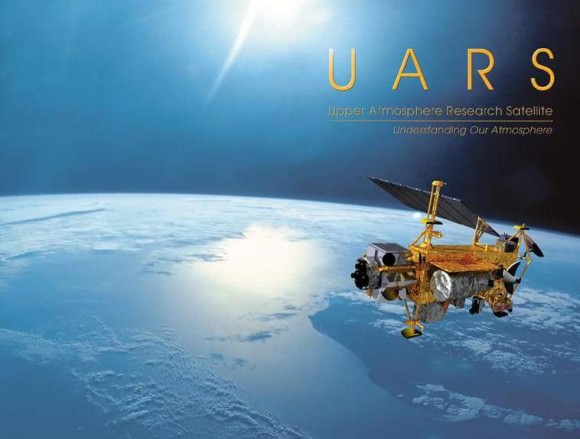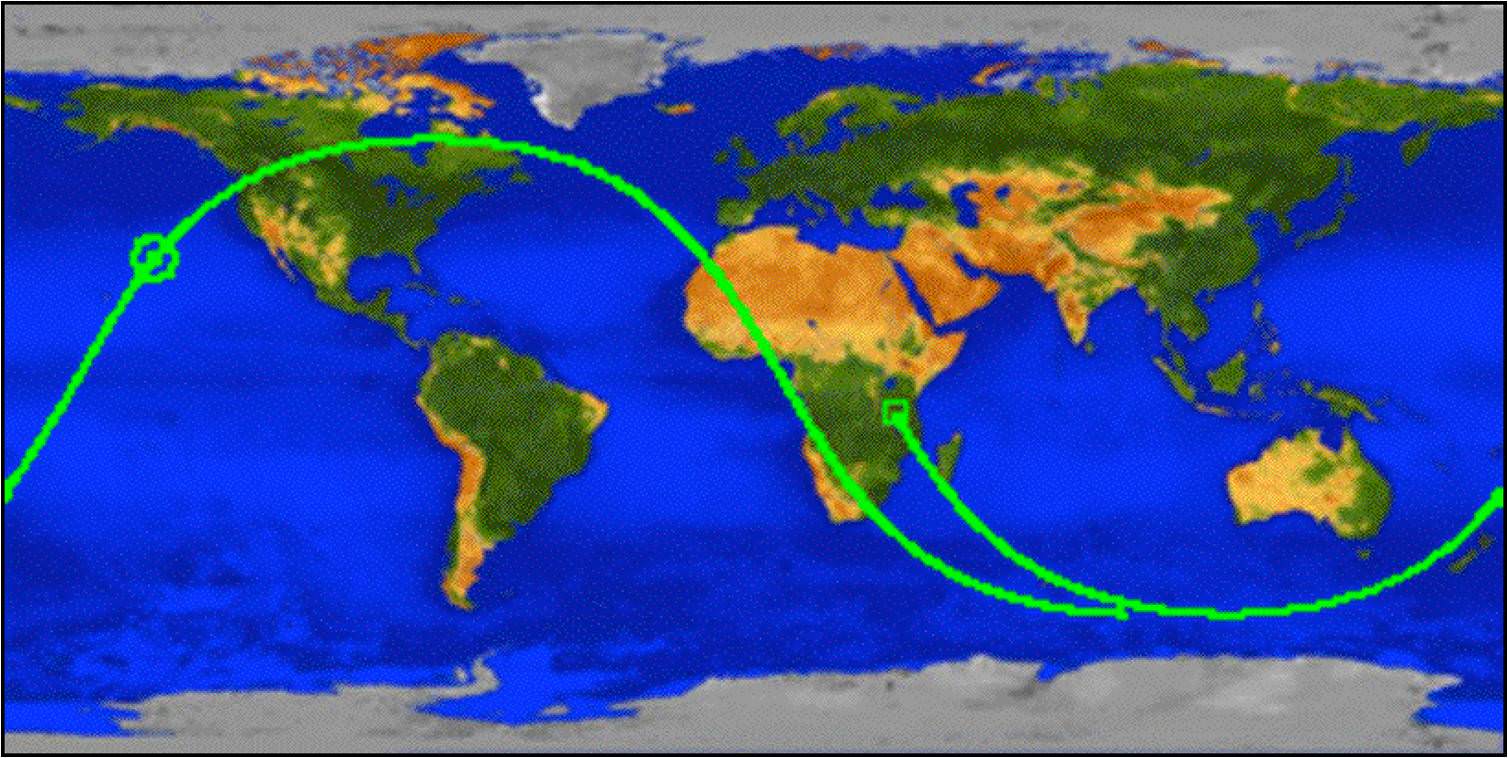[/caption]
After a night of changing predictions and hopes of many to see a fireball in the sky, the UARS (Upper Atmosphere Research Satellite) finally met it’s fiery demise.
The decommissioned, 6.5 ton satellite is believed to have re-entered the Earths atmosphere over the Pacific Ocean, and in it’s death throes the massive satellite broke up, and the surviving debris likely landed in the ocean, off of the West coast of North America.
In regard to the exact re-entry point and position of the debris field, Nicholas Johnson, chief orbital debris scientist at NASA’s Johnson Space Center, said “We don’t know where the debris field might be… We may never know.”
The US Department of Defense’s Joint Space Operations Center at Vandenberg Air Force Base in California and the U.S. Strategic Command radar tracking assessed that the satellite reentered the atmosphere sometime between 0323 and 0509 GMT on September 24, 2011 (the Strategic Command predicted it would re-enter at 04:16 GMT). During this period, the satellite was heading across the Pacific Ocean on a southwest-to-northeast trajectory approaching Canada’s west coast. The mid-point of that groundtrack and a possible reentry location is 31 N latitude and 219 E longitude (green circle marker on the above map).
“If the re-entry point was at the time of 04:16 GMT, then all that debris wound up in the Pacific Ocean,” Johnson said during a media briefing on Saturday. “If the re-entry point occurred earlier than that, practically the entire pass before 04:16 was over water. So the only way debris could have probably reached land would be if the re-entry occurred after 04:16.”
NASA says there are no reports of damage or injury caused by the surviving components that made it to the surface, and there are so far no credible visual reports of anyone seeing the UARS satellite burning up.
The Earth-observing satellite was in orbit for 20 years and 10 days.



It seems odd that we can have so many things near and extremely far from earth completely mapped, tracked, and currently located fairly precisely, yet no one could track a manmade satellite in orbit 20 years through it’s final descent? Methinks our ‘rocket scientists’ and astronomer-types either give the press exaggerated accounts of their accomplishments, dish out positive propaganda like a faithful Obama reelection campaigner, or (likely) I’m not understanding what the real problem was. No one had a recon jet in the air to check it visually? Hmm..
I agree and disagree. There is a huge difference between sending a satellite to check out Mars and sending one up to orbit the earth. For one thing, when stuff gets sent into the outer solar system, they given themselves a huge margin for error. They don’t say ‘We’re aiming for this lat and long’, they say ‘We’re aiming for Saturn’. Also, objects sent to other planets have significantly shorter life spans. A few years rather than decades. A lot less time for orbits to alter and decay. Lastly, space junk. Think of how much crap there is floating around Earth. The Mars Orbiter doesn’t have a fraction of the chance of running into garbage as Earth satellites do. So yeah, you’d think someone would be keeping track of all the things up there, but they do have at least some excuse when they lose track.
Thanks for your post. We were ready here in Canada. http://pic.twitter.com/NM7KZbAf
Our scientists are very advanced. They can track every single natural thing outside earth but they can’t track where this craft will land. It is little unbelievable thing for me.
People, trust me, JSpOC did the best they could. The UARS is dead. There’s no transponder onboard to deliver accurate range rate data. The orbit is determined by ground radar signal tracking only. Much larger errors. Also, with the increased solar activity the atmosphere expands and creates more drag. This makes the satellite fall faster. Coupled with that, drag is directly related to spacecraft attitude, which is unknown. You can only determine two solutions: one with the highest drag force (highest surface area towards the fall) and one with the lowest drag force (lowest surface area towards the fall, nose first). That’s exactly what they did. Two times, from two solutions. Anything else would fall in between. And that’s exactly what happened. I commend JSpOC on an excellent prediction. They help keep the satellites I operate alive out there.